F L A U N T


For a moment, travel back in your mind to the bygone, sparkling summer of 2019. Think of the media you consumed in the last glorious months before the world changed forever. Perhaps you were anxiously waiting to see if the aunt from Full House would be imprisoned for cheating the American college admissions process, or watching one of the two(!) major Fyre Fest documentaries that had just been released. If you’re a fan of basketball, you were most certainly watching something that at one time seemed inconceivable: a team from Toronto, Canada, reveling in an NBA championship. And at the center of it all, cradling the Finals MVP trophy, was the iconic Kawhi Leonard.
The enigmatic superstar had just come off the best gun-for-hire season the league had ever seen, leading the Raptors to their only world championship in his lone year with the franchise. Having secured his first Finals MVP award a few seasons prior with the Spurs, he was regarded by many as the best basketball player in the world.
But for the incredible assortment of players who can say they’ve worn that crown, none have ever been as shrouded in mystery as Kawhi Leonard. Many have assumed that the quiet champ’s life revolves entirely around that proverbial ring in which he battles. It is easy to see why if you’re familiar with Leonard’s methodical, unflappable two-way greatness from buzzer to buzzer.
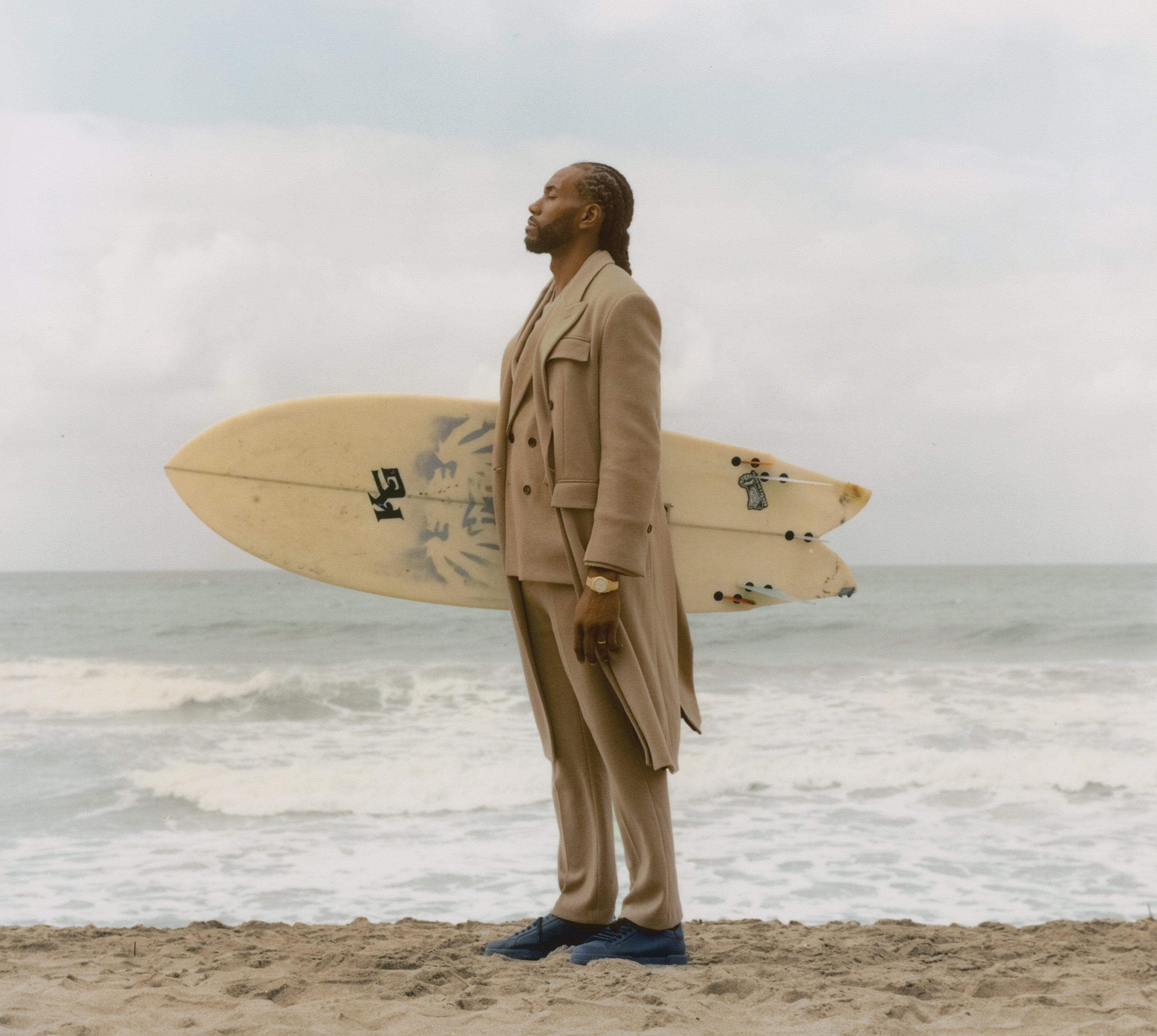
Still, the grand question on our minds in 2019 is the same as it was when Leonard came into the league in 2011, which is the same as it is today: Who is Kawhi Leonard, the man? How is he different from Kawhi Leonard, the athlete? We know the athlete: the kid who got to the NBA not by way of Duke or Kentucky but San Diego State. Who was selected outside of the lottery on his draft night and traded for a high impact role player George Hill, only to peak as one of the greatest forces the sport has ever seen.
Leonard—a Southern California native—is currently in his 14th NBA season enjoying a three-year $150 million contract with the LA Clippers. This follows the aforementioned stops in San Antonio where his star rose, and his championship hiatus in the frozen north. But like the truest ring generals, Leonard’s greatest victories weren’t free from adversity. Injuries are, unfortunately, a recurring theme in the Kawhi Leonard narrative (Exhibit A: the one that occurred in the weeks following this interview and photoshoot). More unique is how those setbacks have been handled, both publicly and privately. In a league where teams almost always lead player rehabs and distribute injury updates accordingly, Leonard prefers to work with his own team and his own doctors. What’s followed has indeed been some confusion around injury specifics, timetables for his returns etc., because as one might imagine, Leonard is not keen to jump in front of a microphone and discuss such matters with local team reporters.
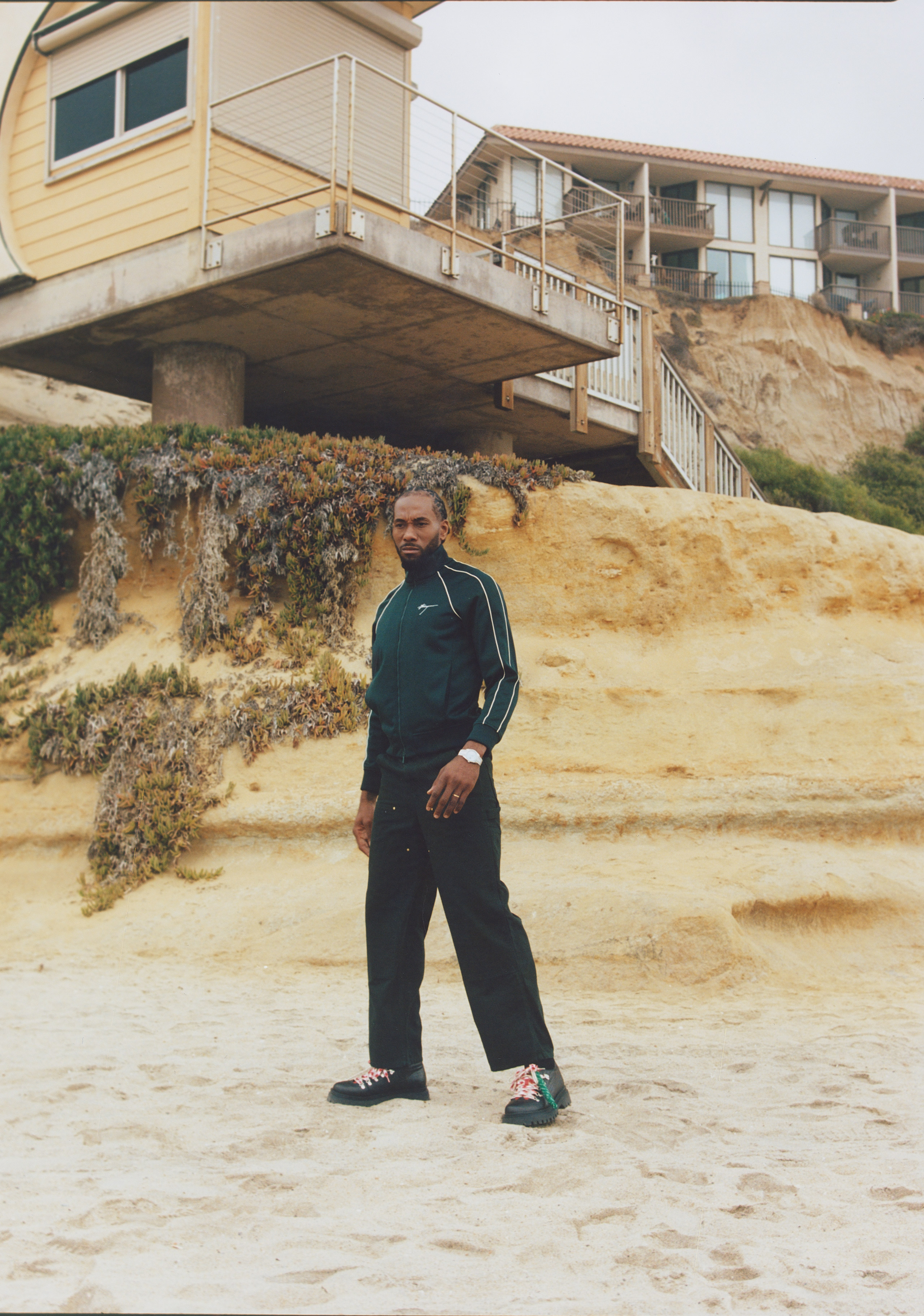
In fact, you might say Kawhi Leonard prefers to speak as little as possible in the public sphere full stop. Abrupt, few word sideline interviews with that infamously monotone inflection have always been the norm. “I don’t do interviews but I also don’t look at [the media] for guidance” Leonard says. “Last time I checked in ’08, they said I wouldn’t be a pro. Then again in 2011 they said I wasn’t going to average 12 points in the league; after that I put my head up and focused on what’s in front of me.”
The rarest of celebrities, he has hardly any social media presence at all to speak of, and magazine profiles like these are the farthest thing from typical. When it comes to Kawhi Leonard the man, does the lack of a tightly crafted public persona mean that he does not contain multitudes? Quite the opposite.
That looming existential threat that hangs over all of us must be considered early for athletes, as least as far as careers are concerned. And like many in his field, Leonard has begun to immerse himself into other ventures as he imagines a post-basketball future - ventures that help reveal the methodology, mindset and spirit behind a notoriously enigmatic star.
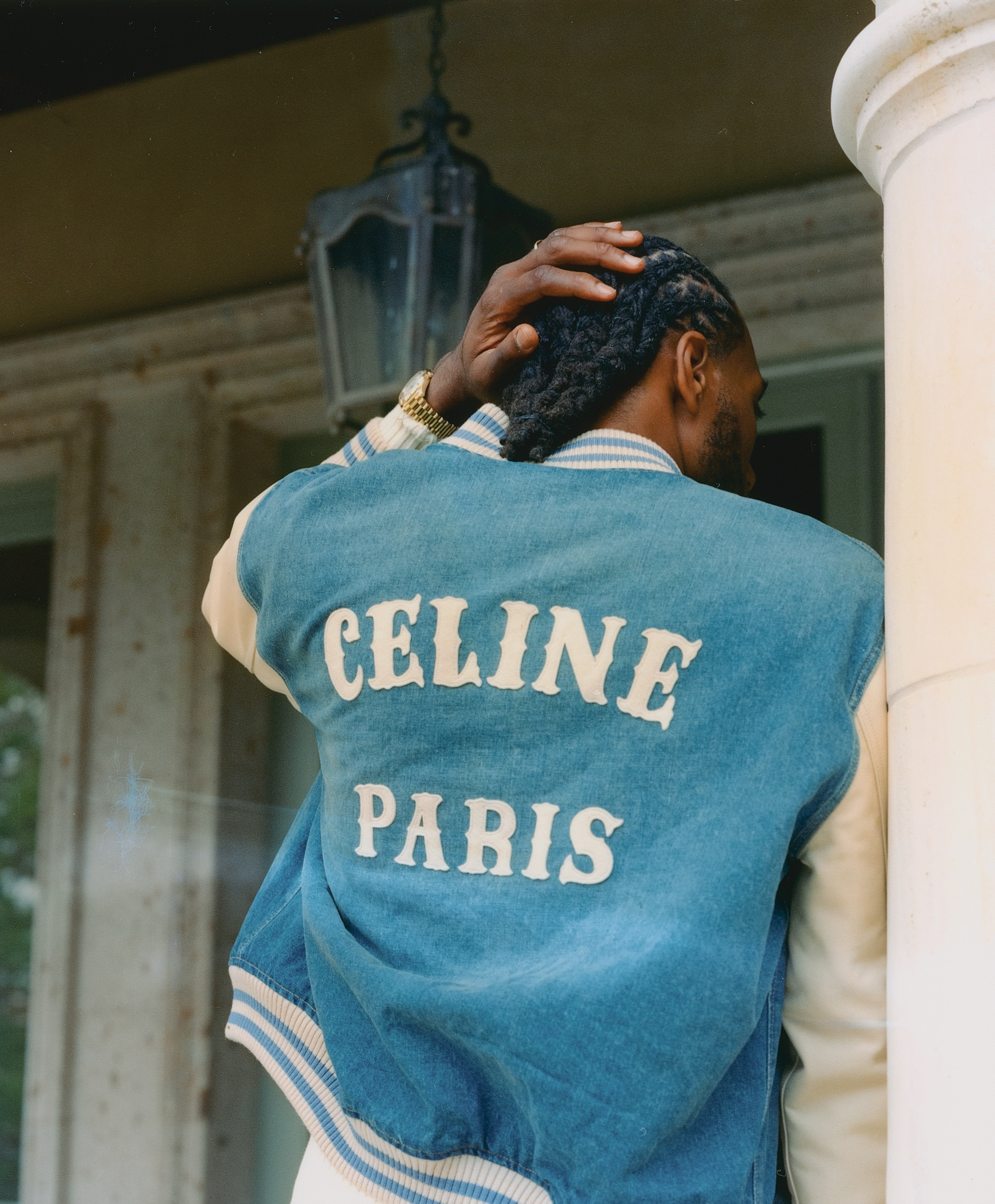
“Something I always say is ‘slow is pro,’” Leonard notes. “It’s about the process for me, making sure that we’re doing everything the right way. So, at the end when the result comes out, we can say we didn’t rush, we took our time and we worked hard.”
For Leonard, process takes precedent over results. How appropriate for the man who patiently gets to his spots against any defense, who seems entirely unfazed in even the biggest moments. The ethos that lead to his playing style and legendary status is the same that propels his life away from the court. And there is one word that comes up again and again, whether we’re talking basketball, business or design: creative.
“Even [in my collaboration] with Nike, I really drew my logo for them,” Leonard starts. He is referencing a highly-deliberated controversy that followed a deal he did with Nike in 2011, in which he rejected Nike’s use of their own logo on his merch and instead illustrated an image of his own hand with his initials and jersey numbers inside. The “Klaw” logo was sold on apparel throughout the entirety of Leonard’s partnership with Nike, but without Leonard’s knowledge, Nike would go on to copyright the hand-drawn “Klaw” logo before the partnership expired. After Leonard went to New Balance, Nike would continue to use the drawing in merchandise. Leonard sued, and lost the lawsuit in 2020.
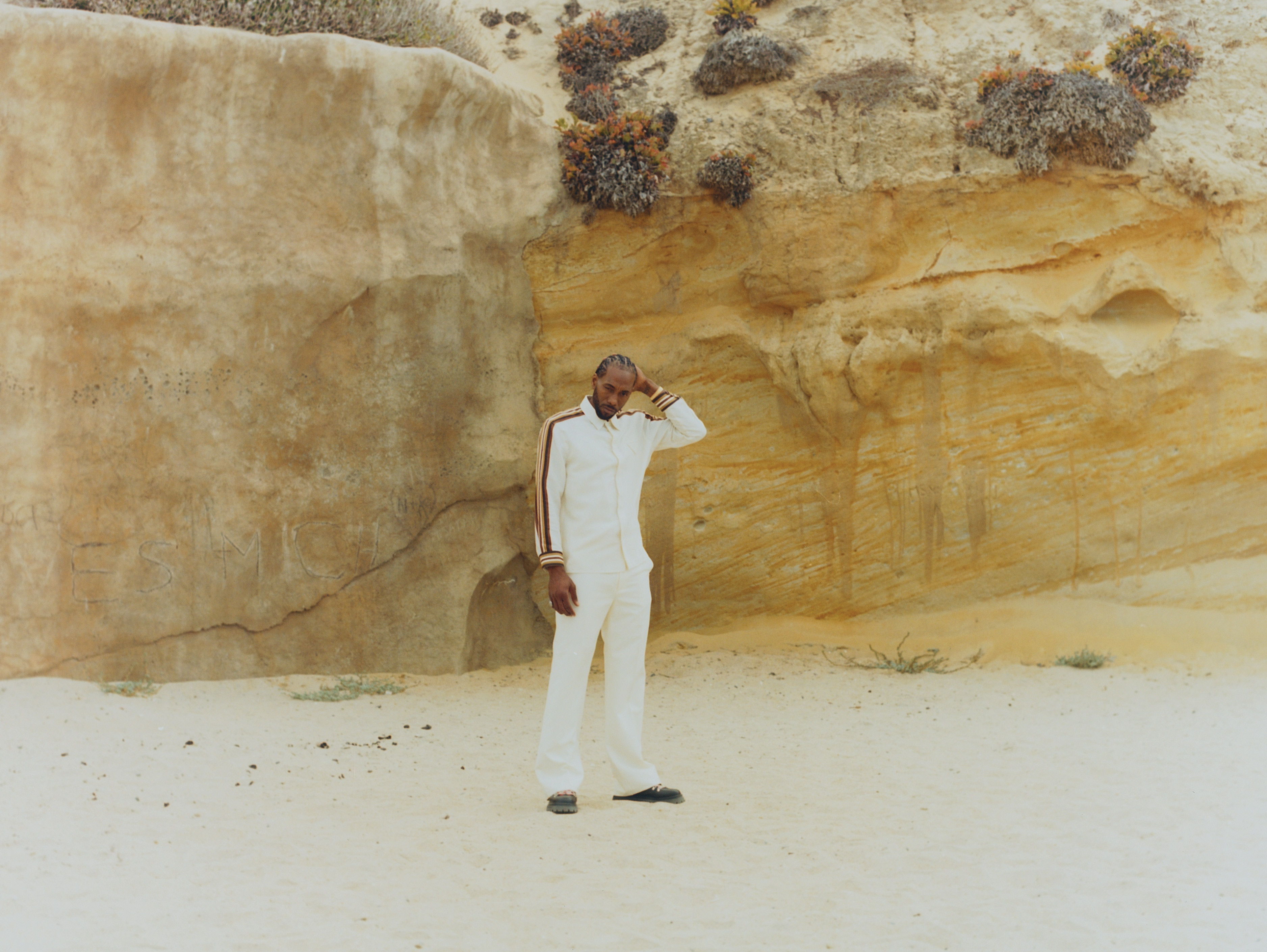
Though the legal battle over creative property would appear to be a drawback, if there’s a single, underlying factor that propels Leonard forward, it would be the journey of creative fulfillment rather than the conquering of that next mountain.
“You just put work into something you see what you can create in the end. Kind of like in basketball. You go through a summer or two of working out, you just see the creation unfold. It’s kind of the same thing in these spaces.”
The spaces in question? Studios, business meetings, philanthropic retreats. Leonard has recently opened his own production company, Lavish Mountain Productions, that focuses on animation and commercial work. He speaks of being deeply motivated by the entrepreneurial spirit of it all: “I started by doing commercials for myself. From there, it was just learning and creating things from scratch. Now we’re starting to get into some animation, so we’re coming out with some animation shorts soon.” He continues, “[They’ll] show a different experience of a craftsmanship mind and different perspectives of how people focus and maneuver through life’s obstacles.”
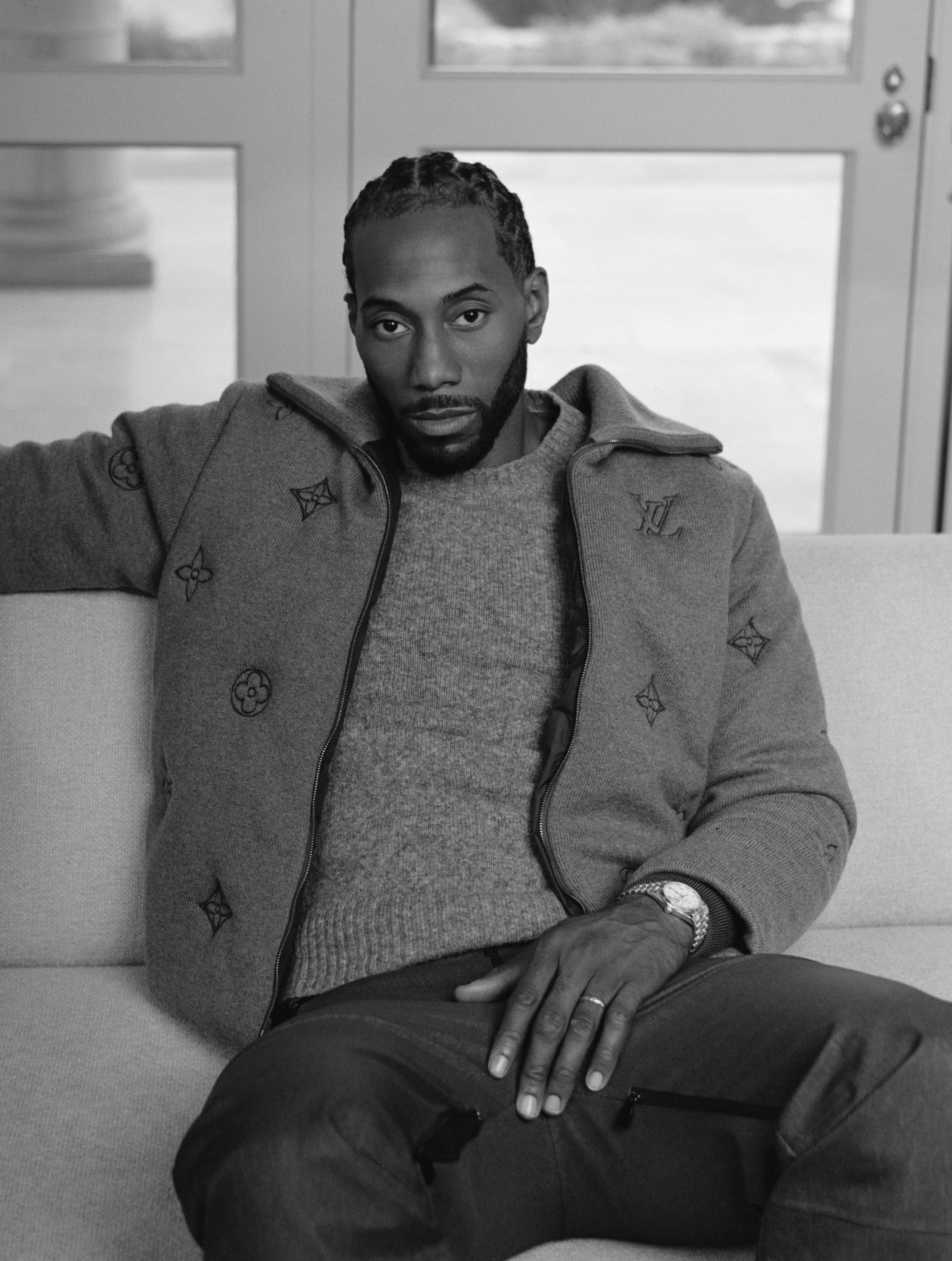
With all the talk of every athlete wanting to be a rapper and every rapper wanting to be a professional athlete, brushing off Leonard’s upcoming record label, Hemlock Records, as quixotic amusement might be tempting. But like so much when it comes to the Clippers star, his connection to this world runs deeper than it might appear. Leonard’s close childhood friend made beats for Soulja Boy, and his step-grandfather, Wilson Pickett, was a recording artist with the smash hit, “Funky Broadway.” And Hemlock Records isn’t his first endeavor into music—in 2021, Leonard presented Culture Jam, an album project that brought rappers and other basketball players together with proceeds going to the Mamba & Mambacita Sports Foundation.
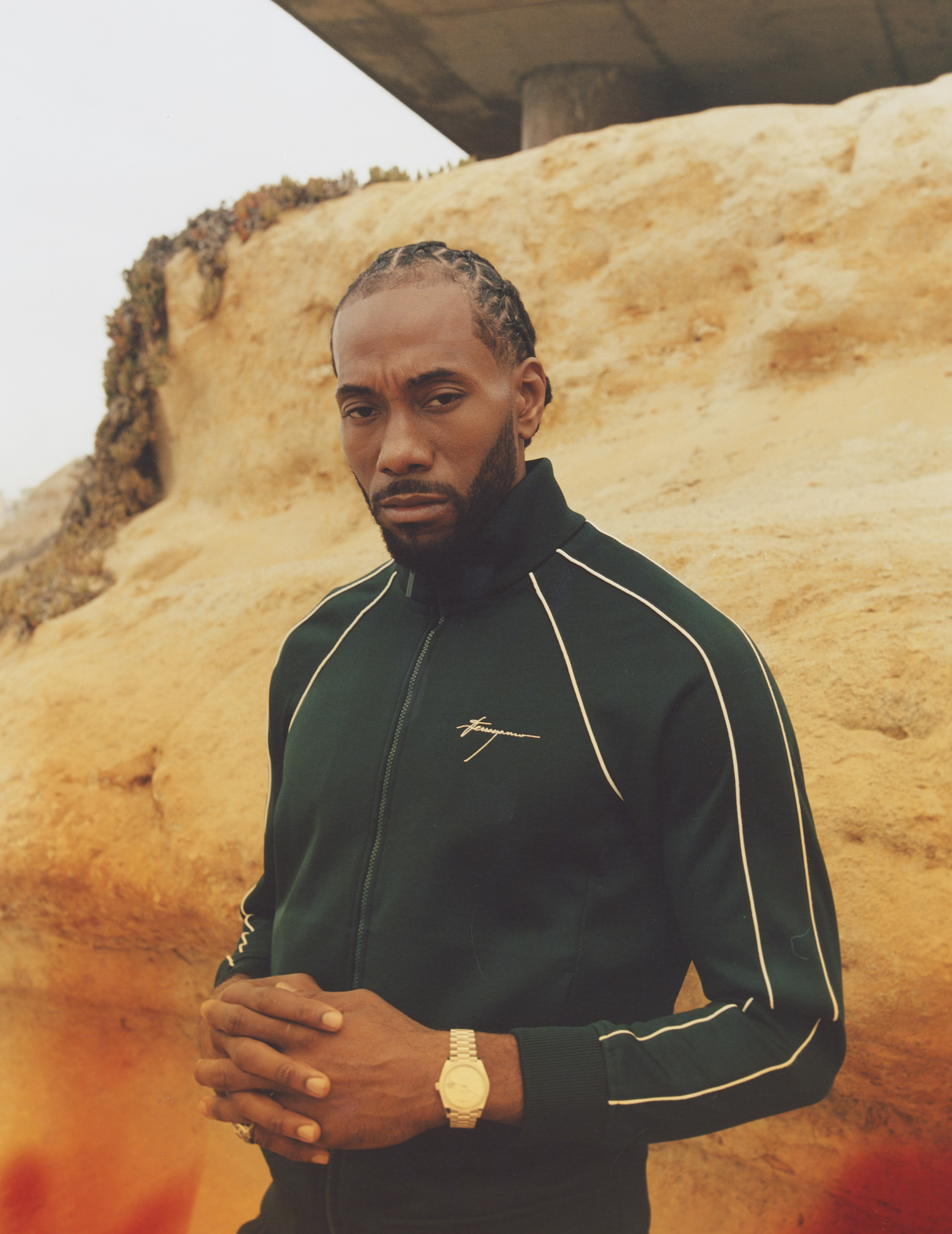
“I just thought I’d do it myself,” Leonard says regarding the record label launch. “There are a lot of local artists where I’m from that are very talented. I just want to give them a platform and be seen by the world.”
It is not surprising that, after decades of honing creative skills and, perhaps, being taken advantage of by larger corporations for these talents, Leonard wants to take control of his own narrative. Still, Leonard’s artistic pursuits are inseparable from that human desire for connection. “Everything I do is pretty much about other people,” he shares.
And as Leonard tells me more about his ventures, the imperative confluence of art, connection and passion really begins to materialize. This year, he took a trip to Rwanda, taking a private meeting with the president Paul Kagame in Kigali to discuss youth sports. He visited the St. Ignatius School, where he helped design basketball courts as part of charity organization Giants of Africa’s “Built Within” initiative, which aims to construct 100 courts across the continent. Leonard speaks of the opportunity as not just a philanthropic endeavor, but a chance for him to use his own creativity to bring about a positive change in the ways that inspire him the most.
“It was an opportunity to give back to the youth out there,” Leonard affirms. “And they wanted me to help design the court. So, I designed it based off of the school colors and some of the patterns that they like in Rwanda. It was pretty full circle because they were the same colors we used at the elementary school I went to. Just giving back to the kids out there. It was amazing.”

Leonard expands on his motivations and passions, and the career of one of our most inscrutable modern athletes begins to crystalize. It came as quite the surprise to fans when he signed his shoe deal with New Balance in 2018, forgoing the Nikes and Adidases of the world who have traditionally dominated the basketball market. But like everything else in his life, Leonard’s considerations are holistic and rooted in far more than spotlight.
"With New Balance, or whoever it is, it’s about who the owner is,” Leonard tells me. “Trying to figure out if their vision aligns with mine.”
In New Balance, Leonard was afforded a chance to collaborate directly with those who share his vision and allowed him to create designs inspired by what he holds dearest. “My daughter’s really into tennis, so I wanted to do a tennis-inspired shoe,” Leonard says of his upcoming design/release. Fast forward seven years from when he first signed on, and New Balance has recently announced the signing of this year’s number one draft pick and potentially generational talent, Cooper Flagg. “It just shows you how much work we’ve been putting in and how Chris Davis’ vision is unfolding.”

That designing bug has even led to Leonard starting his own personal fashion line ManMyth, the philosophy behind which revealing the true depth of his creative character. “ManMyth is something that feels both ancient and otherworldly” Leonard says. “It could have been made a million years in the past or a million years in the future. The inspiration comes from myself and others. Myself, being born with special physical characteristics but also having the ability to perform my job in a robotic sense without being complicated by emotion; and others that have that left a mark on the world; they are true reality to some but considered myths to others, such as Jesus, the pyramids, Noah’s arch—modern day craftsmanship.
But even the most accomplished that the culture has to offer must find some time to get away from the work. And like so many with a creative drive, even the unwinding can feel inspired. Leonard is an avid reader, and when he’s not delving into a book, you can often find him in his garden (Yes, NBA superstar Kawhi Leonard loves to grow his own plants and vegetables). But more than that, he makes a point to spend as much time as he can with his family. On his reputation as one of the most private stars in sports: “My privacy is more about my family. It’s about trying to keep my family away from basketball, and separating basketball from them and my daily living.” Perhaps his greatest motivation isn’t so curious after all.
Photographed by Mark Clennon
Styled by Jay Hines
Written by Jake Carlisi
Grooming: Elsa Canedo
Flaunt Film: Jonathan Ho
Styling Assistants: Michael Washington and Amiah Joy